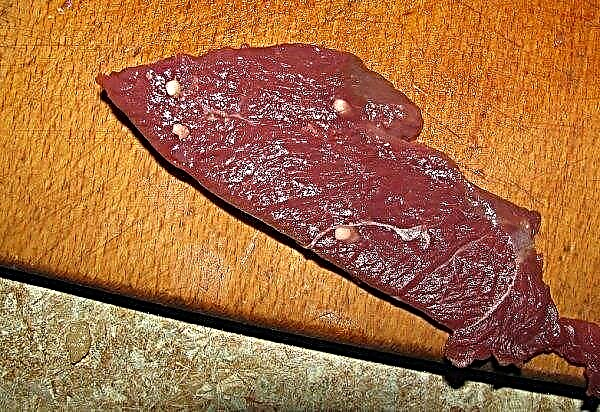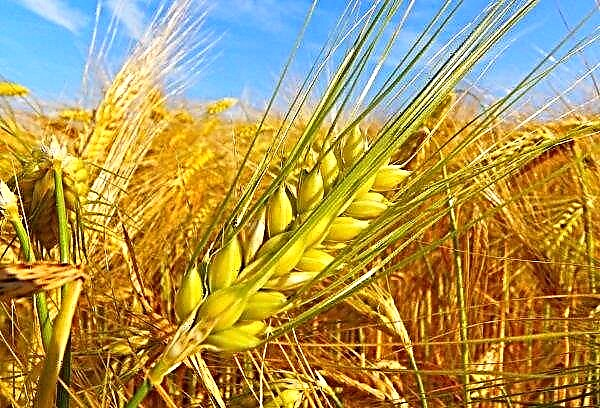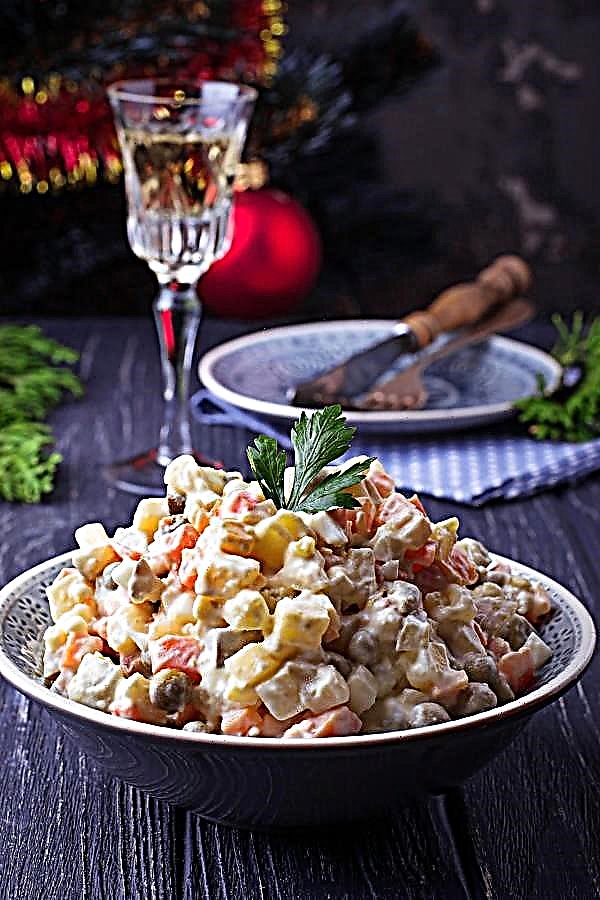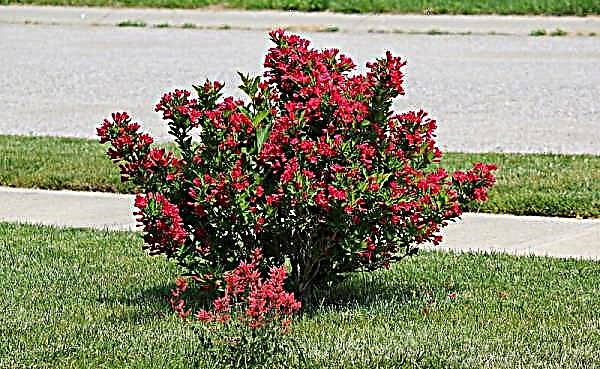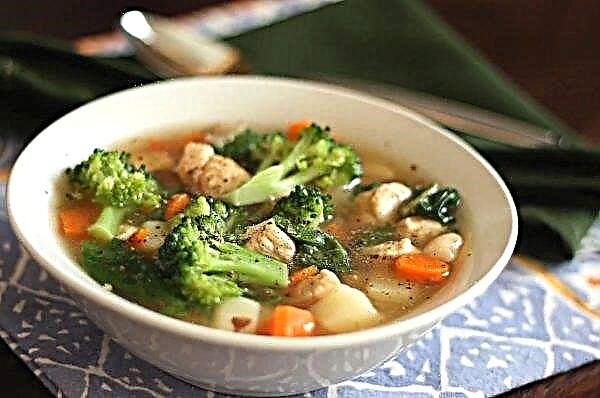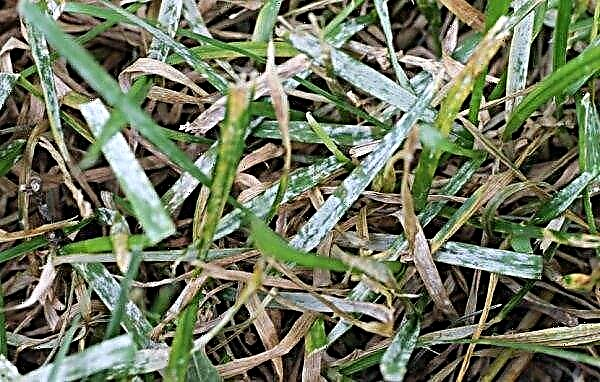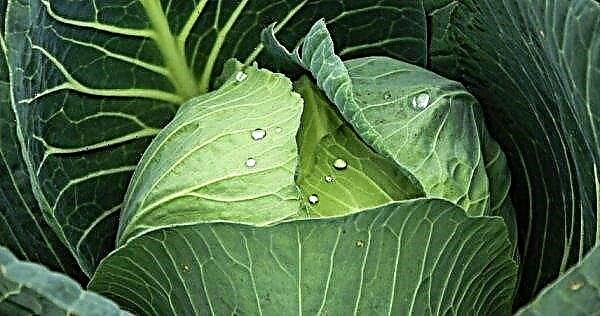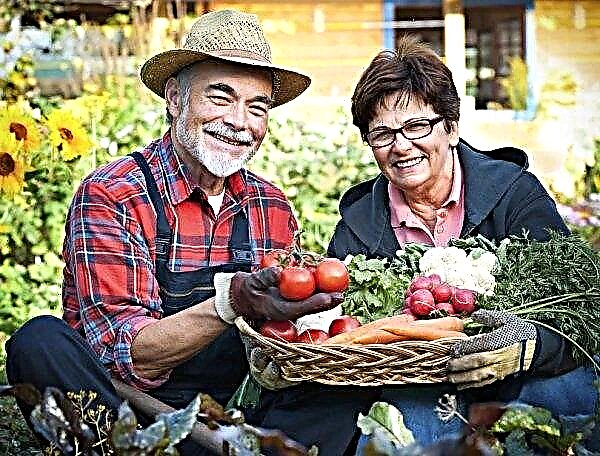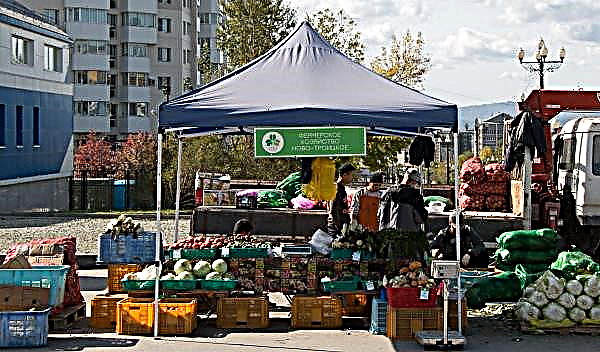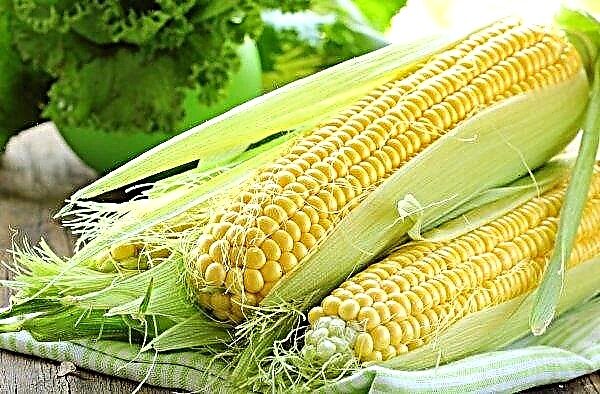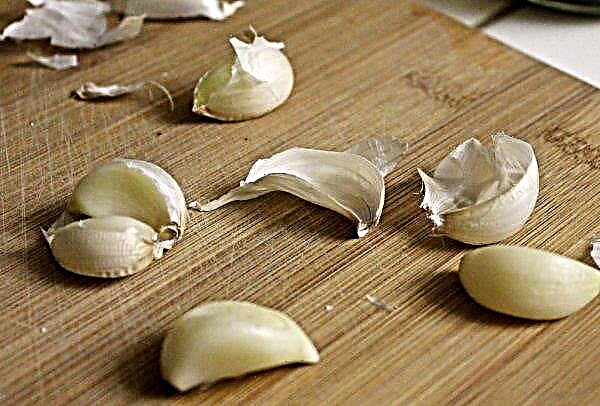In the legume family, lentils and chickpeas occupy a prominent place both in their qualities that are valuable to human health and in gastronomic properties. Recently, they are gaining more and more popularity among fans of healthy and wholesome nutrition. Read more about these products later in the article.
Chickpeas and lentils
Although both of these plants belong to the legume family, both externally, both in gastronomic qualities, and in the content of nutrients, and in terms of cultivation, they have noticeable differences, which can be traced in comparison to the tables below.
Did you know? Together with peas, wheat and barley, lentils are among the first plants cultivated by humans in the Neolithic.
Appearance and description
Chickpeas, also called Turkish peas, is an annual plant with an upright stalk that rises to a maximum height of 70 cm. Unpaired leaves are small in size, short petioles and complex in shape.
Small axillary flowers have a different color. Short bloated beans usually contain 1-2 seeds, but sometimes up to 4. Seeds with a diameter of 0.5 to 1.5 cm resemble a ram's head. Their color varies from yellow to dark tones. In different varieties, the mass of 1 thousand seeds varies between 150 and 300 g.
Lentils has an erect, branched stem, reaching a height of 75 cm. Small paired leaves with short petioles end with antennae. Small flowers of white, purple or pink color bloom in June and July.
Beans with a length of 1 cm and a width of 0.8 cm contain from 1 to 3 seeds flattened with sharp edges. Different varieties of seeds are red, green or black.
Chemical characteristics
Different varieties of these crops vary in both calorie content and nutrient content.
Nutrition value of chickpeas per 100 g:
- calories - 364 kcal;
- proteins - 19 g;
- fats - 6 g;
- carbohydrates - 61 g.
| Minerals are presented: | Vitamins are presented: |
| iron | beta carotene |
| magnesium | thiamine (B1) |
| calcium | riboflavin (B2) |
| potassium | nicotinic acid (B3) |
| phosphorus | choline (B4) |
| copper | pantothenic acid (B5) |
| zinc | pyridoxine (B6) |
| sodium | folic acid (B9) |
| manganese | ascorbic acid (C); tocopherol (E); menadione (K) |

Nutrition value of lentils per 100 g:
- calories - from 297 to 318 kcal;
- proteins - from 23.8 to 24.3 g;
- fats - from 1.3 to 1.9 g;
- carbohydrates - from 48.8 to 56 g.

| Micro and macro elements are presented: | Vitamins are present in the form of: |
| calcium | retinol (A) |
| potassium | beta carotene |
| iron | thiamine (B1) |
| phosphorus | riboflavin (B2) |
| magnesium | nicotinic acid (B3) |
| copper | choline (B4) |
| zinc | pantothenic acid (B5) |
| selenium | pyridoxine (B6) |
| manganese | folic acid (B9); cyanocobalamin (B12); ascorbic acid (C); tocopherol (E); menadione (K) |

Beneficial features
- The most characteristic beneficial properties of chickpeas are:
- rapid assimilation of the nutrients contained in it;
- high content of vegetable proteins;
- protein saturation;
- normalization of the digestive system;
- the ability to cleanse the blood well and stop inflammatory processes;
- contributing to the elimination of cardiac arrhythmias;
- relief of lumbar pain;
- elimination of problems with hepatic activity;
- beneficial effects on the functioning of the spleen;
- suppression of putrefactive manifestations in the intestine;
- optimizing blood sugar;
- lowering the content of bad cholesterol in the circulatory system;
- increased lactation in nursing mothers;
- dissolution of kidney stones;
- strengthening bone tissue;
- improving the functioning of the immune system;
- stimulating brain activity;
- successful fight against dermatitis;
- excretion of poisons and toxins from the body;
- improving the functioning of the visual organs;
- normalization of the nervous system.

- Eating lentils regularly is beneficial:
- muscle, due to the presence of vegetable protein in its composition;
- the circulatory system due to the noticeable presence in the product of magnesium, potassium, folic acid and fiber, which successfully cleans the blood from the presence of bad cholesterol;
- blood sugar, which is optimized due to the presence of slow carbohydrates in lentils;
- brain activity;
- nervous system and its normalization;
- metabolic processes;
- when losing weight due to the low glycemic index;
- the condition of the skin;
- the immune system and its strengthening;
- the process of removing poisons and toxins from the body;
- pregnant and lactating women;
- male health status.

Taste characteristics
Chickpeas has a neutral taste. With the exception of a light nutty flavor, it does not differ in characteristic features. When cooked, it most closely resembles mashed potatoes. Taste neutrality makes this product versatile in use, from which many dishes are prepared from soups to desserts.
Taste lentils It is a cross between the taste characteristics of peas and beans, but not so pronounced and much more tender.
Important! To avoid the occurrence of severe stomach cramps, one should not drink cold water while eating chickpeas while eating chickpeas.
Contraindications and side effects when taken
- In addition to individual intolerance, chickpeas can be hazardous to health when:
- bladder diseases;
- kidney problems;
- propensity to gas in the intestines;
- gout
- inflammation of the mucous membranes of the stomach or intestines;
- thrombophlebitis.

- Do not eat lentils to people suffering from:
- individual intolerance to the product;
- uric acid diathesis;
- joint diseases;
- gout
- intestinal dysbiosis;
- increased gas formation;
- hemorrhoids;
- biliary dyskinesia.
Cooking
There are many recipes for preparing chickpea and lentil dishes, both jointly and separately.
Chickpea cutlets

630 minutes
vegetable oil
taste
ground black pepper
taste
ground red pepper
taste
- Chickpeas need to be soaked for at least 8 hours, or even for a day, keeping it in the refrigerator.
- Then the soaked product should be crushed using a blender or meat grinder.
- Chopped peeled onions and garlic in the same way.
- Mix the chopped vegetables with chickpeas and add eggs, spices and salt to the mixture.
- From the resulting mass, form cutlets, the height of which should not exceed 1.5 cm.
- Fry in a small amount of vegetable oil (preferably in a cast-iron skillet) until golden brown on both sides.
- Chickpeas with ketchup or some sauce are served.

Important! When eating chickpeas, one should remember that chickpea grains contain up to 30% protein, which is close in its properties to egg, and up to 55% carbohydrates.
Lentil Soup

630 minutes
carrot
2 pcs. (medium size)
- Lentils are boiled.
- Tomatoes and onions are cut in large pieces.
- Grate carrots on a coarse grater, ginger root - on a fine.
- Chop the garlic finely.
- Shredded vegetables passer.
- Stewed vegetables are added to the pan with boiled lentils.
- The mixture is simmered for a quarter of an hour.
- Then everything is ground using a blender.
- Sliced bread in small cubes is fried in a pan without adding oil for 10 minutes with constant stirring.

Did you know? The many-faced chickpeas, in addition to what is called not only Turkish, but also Egyptian and lamb peas, has red, and green, and brown, and even black color.
Red Lentil and Chickpea Soup

435 minutes
black mustard seeds
1 tsp
- Chickpeas must be soaked overnight in water.
- Boil it, not bringing it to full readiness.
- Put lentils with water on medium heat.
- A quarter of an hour before her readiness to add to her previously undercooked chickpeas.
- While vegetables will reach the condition on fire, you should heat the pan and melt the butter on it.
- Add mustard seeds to the oil and fry them before cracking, then add garlic.
- When the garlic is fried, spices should be added to the pan.
- Fry them with vigorous stirring for 10 seconds and then send the contents of the pan to the pan with chickpeas and lentils.
- Then the soup should be salted and boiled for another couple of minutes.
- After turning off the fire, chopped cilantro greens must be added to the soup, after which the dish is ready to eat.

Lentils and chickpeas, representing a glorious bean family, are so far less popular in our area than their close relatives are beans and peas. This happened partly due to existing habits and traditions, and partly due to the fact that, for example, chickpeas require a warmer climate. However, the undoubted nutritional and taste qualities of these fruits and the success of breeders are steadily contributing to the growth of admirers of these crops both in retail outlets, in beds and in greenhouses.

